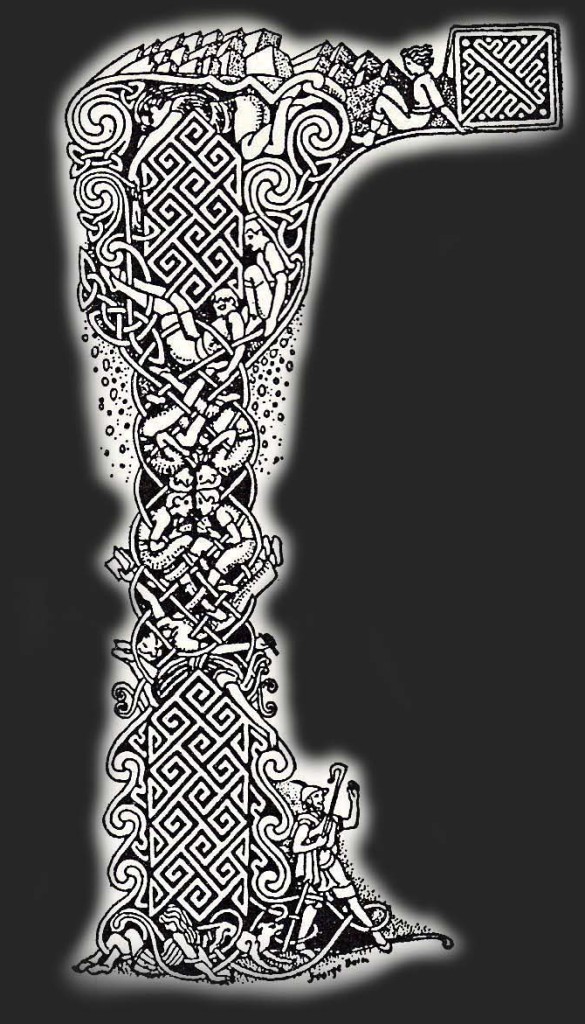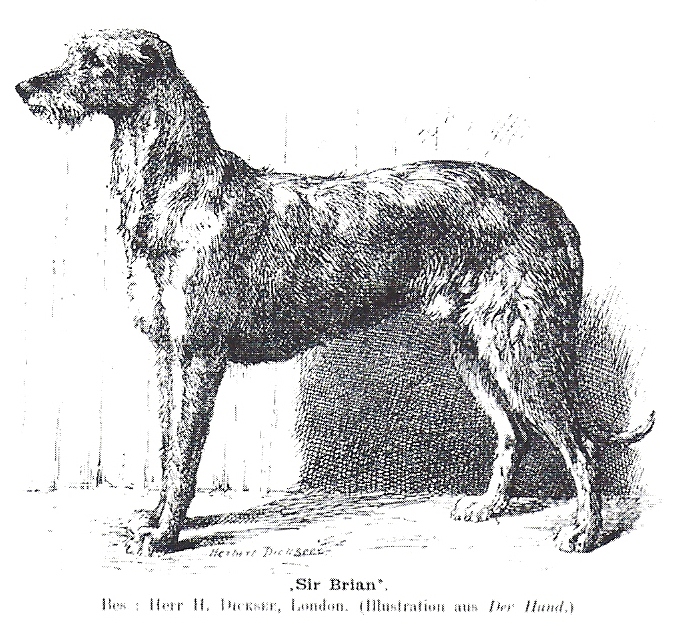 Bleeding disorders
Bleeding disorders
The article is taken from the SDCA ‘Health and Genetics’ site.
Two unrelated bleeding disorders have been identified in Deerhounds to date, both of which typically happen when a Deerhound undergoes surgery or experiences major trauma:
Factor VII deficiency (FVIID) can affect a dog’s ability to form clots, so tends to happen during sugery. It is treated by giving the affected dog plasma from a dog without FVII deficiency.
Delayed Bleeding Sydrome (DBS – also sometimes called hyperfibrinolysis) is a disorder of clot stability, nog clot formation, which is why the bleeding is usualley (but nog always) delyed, typically starting within 24 – 48 hours after surgery or major trauma. It is prvented or treated with aminocaproic acid or tranexamic acid.
These issues are unrelated and not mutually exclusive: It is entirely possible for a Deerhound to have both Factor VII deficiency and DBS—that is, to be at risk of excessive bleeding both during and after surgery/injury.
A genetic test for FVIID is widely available. There will soon be a genetic test for DBS. It is recommended that all Deerhound owners know the genetic status of their dogs for both FVIID and DBS so preparations can be made should a dog affected by one of both of these conditions need surgery or suffer from major injuries.
Factor VII Deficiency
Factor VII Deficiency (FVIID) occurs when a dog has no copies of the normal Factor VII gene and instead has two copies of a variant form of the gene. This condition is found in several breeds, including Deerhounds, and also mixed-breed dogs. The disease can affect dogs of either sex.
The Factor VII gene contains instructions for making a protein called Factor VII, which helps blood to clot. The Factor VII protein made by the variant form of the gene does not work as efficiently as that made by the normal form of the gene. As a result, Deerhounds with Factor VII deficiency can have trouble making effective blood clots and so are at higher risk of excessive bleeding during surgery or a major trauma (such as being hit by a car).
The Factor VII variant is inherited as an autosomal recessive gene, so a dog can be either clear (no copies of the variant), a carrier (one copy of the variant), or affected (two copies of the variant). Only an affected Deerhound has an increased risk of excessive bleeding. Dogs that are clear or carriers form blood clots normally.
Affected Deerhounds have no problems day-to-day and lead normal lives but have a higher risk of bleeding during surgery or trauma. Some affected dogs have no problems during surgery, while others bleed severely and can die. We don’t know how much the increased risk is, and there is no way to predict how a Factor-VII-deficient dog will react during major surgery. If bleeding starts during surgery, it can be treated with plasma from a dog without Factor VII deficiency. It is important to know that not all veterinary clinics have plasma on hand; should an affected dog need surgery it is essential they go somewhere that has plasma in case a problem occurs. Breeders should discuss with their vets the potential risks of breeding a Factor-VII-affected bitch, and owners of affected dogs should make sure that their dogs’ records note in a prominent place that their dog is affected and a plan is in place should their dog need surgery or is severely injured.
There is a genetic test available for Factor VII Deficiency in Deerhounds, and all Deerhound owners are encouraged to know the Factor VII status of their dogs. Knowing Factor VII status is one of our Recommended Health tests for both puppies and adults, and responsible breeders tell puppy buyers whether or not their puppy is affected based on either test results or knowledge of the parents’ Factor VII status. The Recommended Health Test page has information on the Factor VII Deficiency genetic test, including access to a list of labs that run the test.
For breeders, the goals should be to never produce an affected individual. A Factor VII-clear Deerhound (no copies of the mutation) can be bred to mates of any Factor VII status. A Deerhound that is a Factor VII carrier (one copy of the mutation) or that has Factor VII deficiency (two copies of the mutation) should be bred only to a mate that is Factor VII-clear. Remember, a genetic test should not alter WHO gets bred, only WHO the dog gets BRED TO. It is only through using all of the bloodlines we have that we’ll be able to maximize the effectiveness of the tests and improve the health of our breed, so no dog or line should be eliminated from breeding because of Factor VII genetic status, especially in light of our shrinking gene pool.
The important thing is every Deerhound owner should know the Factor VII status of their dogs so proper precautions can be taken for affected dogs should surgery be needed or trauma occurs.
Here is more information on Factor VII Deficiency.
Delayed Bleeding Syndrome
Delayed Bleeding Syndrome (DBS), sometimes also called hyperfibrinolysis, occurs when a dog has one or two copies of a variant form of a gene that is involved in preventing blood clots from dissolving until after a wound has healed. This condition is found in several breeds, including Deerhounds, and also mixed-breed dogs. The disease can affect dogs of either sex.
When a blood clot forms to stop a wound from bleeding, the clot normally is dissolved after the wound heals. A normal DBS gene contains instructions for making a protein that prevents blood clots from dissolving. But the protein made by the variant form of the gene does not work as efficiently as that made by the normal form of the gene. As a result, blood clots in Deerhounds with DBS can dissolve prematurely after major surgery or trauma. Problems, including severe skin bruising and bleeding from the wound, are typically first noticed one or two days after surgery or injury but have been seen as early as shortly after surgery.
The variant causing DBS is inherited as a dominant gene with incomplete penetrance, so dogs are either clear (no copies of the mutation) or affected (having one or two copies of the gene). Current research shows that, compared to a clear dog, a dog with one copy of the DBS variant is 32 times more likely to experience delayed bleeding, while a dog with two copies is 427 times more likely to experience delayed bleeding.
Dogs that have one or two copies of the DBS variant have no problems day-to-day and lead normal lives, but they have a higher risk of bleeding after surgery or trauma. For reasons not yet understood, affected dogs (especially dogs with only one copy of the DBS variant) can undergo surgery without experiencing delayed bleeding problems. But if delayed bleeding does occur, it can be fatal, particularly if it isn’t caught soon after it starts.
Most bleeding starts within 24–48 hours after surgery, although there are cases where it starts earlier. There is no way to predict how an individual DBS-affected dog will react during or after major surgery. Bleeding can be prevented and/or treated with administration of aminocaproic acid (also known by its brand name, Amicar) or tranexamic acid. For this reason, should a DBS-variant affected dog need surgery, they should always prophylactically receive either aminocaproic acid or tranexamic acid orally on the day of surgery (or trauma) and then orally every 8 hours for 5 days after surgery (or trauma).
Dogs that have a bleeding episode post-operatively or after major trauma should be treated immediately with either aminocaproic acid or tranexamic acid, the first dose given IV slowly, if possible (if not, give the drug orally), and subsequent doses given every 8 hours orally if the dog can take meds that way. Treatment usually continues for five days.
Until a genetic test is available, for dogs whose DBS status isn’t known, the SDCA recommends that a Deerhound experiencing a major traumatic injury or undergoing major surgery should either be closely monitored for DBS around the clock for at least 48 hours after injury/surgery, and if DBS is suspected, then the Deerhound should be treated ASAP with aminocaproic or tranexamic acid; or treated prophylactically with aminocaproic or tranexamic acid as described above. Owners who choose to monitor should make sure the hospital has 24-hour coverage and some aminocaproic or tranexamic acid if the dog is staying overnight. Please note: most veterinary clinics do not have either of these two medications on hand, so owners are encouraged to keep a current supply.
Here is more information on aminocaproic acid.
Here is more information on tranexamic acid.
These findings are currently being prepared for peer review and publication. A commercial version of the DBS gene test will soon be available.
This research still needs DNA samples and vet records from affected dogs. If you own a dog that bled post-operatively, please contact Dr Court to arrange to send a sample and vet records. If DNA is already in our CHIC DNA Bank or another research institution, just let Dr. Court know.
Here is more information on the research.
Here is Dr. Court’s presentation at the 2021 National Specialty.
Here is more information on providing samples from affected dogs.
When a genetic test is available, all Deerhound owners will be encouraged to know the DBS status of their dogs; Responsible breeders will tell puppy buyers whether or not their puppy is affected based on either test results or knowledge of the parents’ DBS status. Clear dogs will not need aminocaproic acid or tranexamic acid post-operatively, but dogs with one or two copies of the gene will need one of those medications the day of and for five days after surgery.
A genetic test on the horizon is extremely exciting news for us, but PLEASE remember that this is a treatable and preventable problem: what this test is going to tell us is which dogs are at risk of post-operative bleeding and need treatment with aminocaproic acid or tranexamic acid. We are NOT saying that dogs should be removed from the gene pool because they have this mutation. This is a preventable, treatable problem, and OUR GENE POOL CANNOT AFFORD TO BE REDUCED ANY MORE. So please: although everyone’s first instinct is to remove dogs with a potentially harmful mutation from breeding programs, we need to change our thinking to just take DBS status into account when planning breedings and to inform puppy buyers of their puppy’s delayed bleeding status—just like Factor VII.
Read this article on how these two variants were discovered in Deerhounds.


